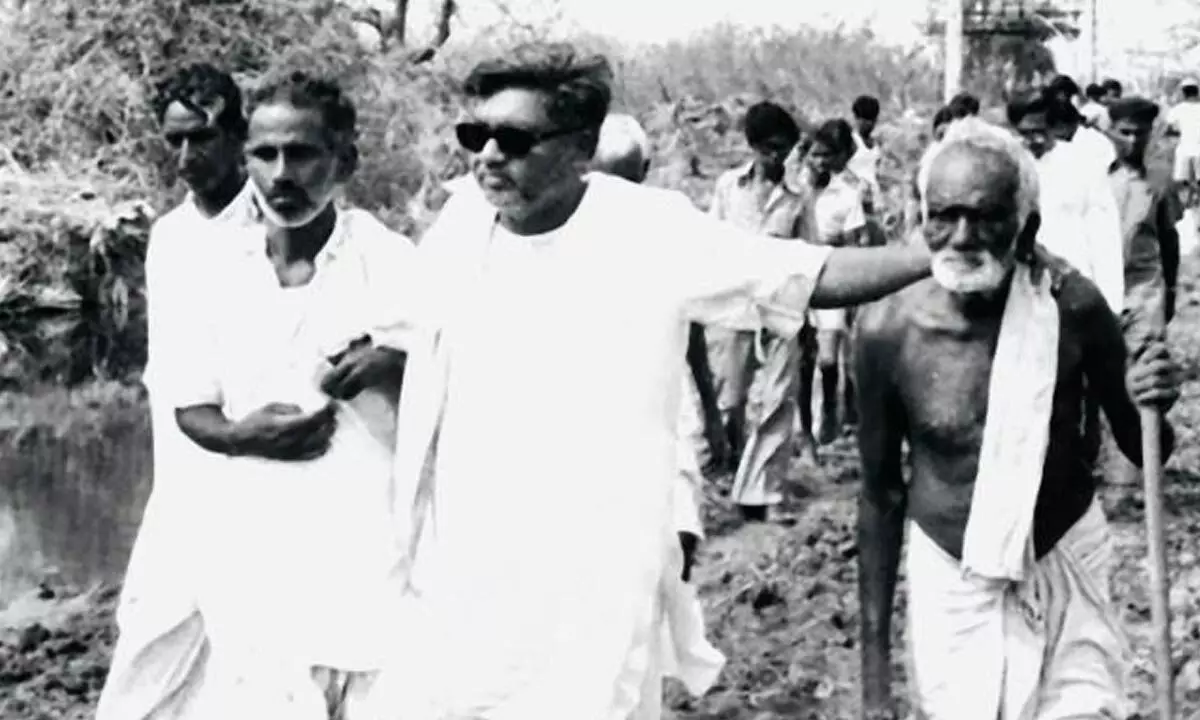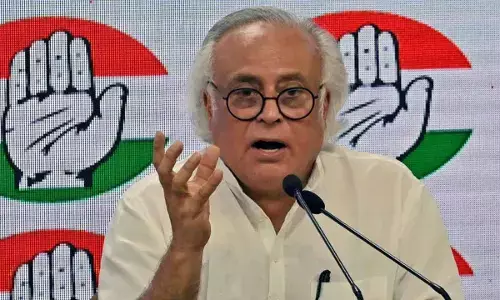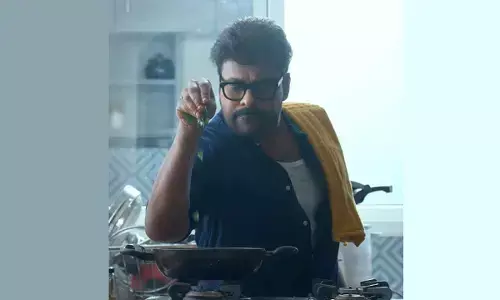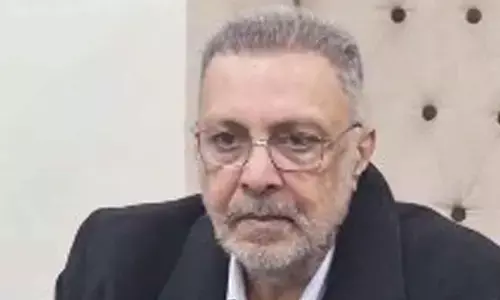THE ‘DIVI SEEMA GANDHI’

47 years ago, a devastating cyclone struck Divi Seema of Krishna district on 19th November 1977.
47 years ago, a devastating cyclone struck Divi Seema of Krishna district on 19th November 1977. When the cyclone made landfall, the wind speed was estimated as 200 kmph, accompanied by torrential rain and storm surges. It inundated vast areas, damaged properties, and washed out several villages and whole families. Many people lost their lives, animals drowned or dead, roads were ruined, bridges collapsed, electricity and water supply discontinued, and the entire communications were disrupted. Massive relief operations were instantly initiated by the government and NGOs, regional associations, religious groups, political parties, local communities, Army, volunteers, social workers etc.
Relief camps provided the immediately requirement of ground-level support like safe drinking water, food, clothing, and shelter. The disaster management teams of state government were activated. Rescue, relief, and rehabilitation operations, followed by cyclone reconstruction activities, and establishment of central kitchens to supply hygienic food were speeded up. Medical teams were pressed into service. The disaster emphasised the need for better management of infrastructure, early warning systems, and evacuation procedures in future. The cyclone exposed the vulnerability of Coastal Andhra.
This ghastly occurrence was the deadliest cyclones in India's History, leading to widespread destruction and a significant humanitarian crisis. Despite significant weather warnings, prior to cyclone, in the absence of advanced communication systems, many coastal residents were in dark, and unaware of the impending danger. Efforts to evacuate people were inadequate, resulting in high casualties of human beings (a moderate estimate was 10,000 lives) and animals. With limited infrastructure, handling large-scale evacuations became difficult. Jalagam Vengal Rao who was the Chief Minister, handled the situation effectively and efficiently.
Most important was the unparalleled involvement with enormous sympathy and empathy by Mandali Venkata Krishna Rao, a cabinet minister in Vengal Rao team. He played a crucial role during relief operations, promptly jumping into relief activity. Often in waist deep water, and braving the intemperate weather, he toured the adjoining villages. He requested Chief Minister Vengal Rao to relieve him of his responsibilities as a minister, to enable him to serve people better, and bring succour to the suffering people.
51 years old Krishna Rao also took the lead in mobilising resources and organising immediate relief measures, including food, medical aid, and temporary shelters for displaced families. Beyond immediate relief, Mandali Krishna Rao advocated for long-term rehabilitation, including rebuilding infrastructure and providing support to revive the livelihoods of the affected population, especially in agricultural and fishing sectors. His act of walking barefoot was symbolic, showing humility and his sense of duty towards the suffering communities.
In an article (made available to me by his son Mandali Buddha Prasad) titled ‘The Dark Night, The Sea Struck; The Tidal Wave That Ran Amuck’ written by Mandali Venkata Krishna Rao, he recalled the happenings of those dark days, and about his ‘Intuition coupled with the warnings of a severe cyclone by All India Radio News Bulletins’ that led him to take the decision of cancelling his proposed journey to Hyderabad, and instead preferring to stay in the ‘Sevashram Orphanage’ at Avani Gadda, housing 60 orphans, so that they were not scared of the situation. That way he started doing his best in that crisis. When the velocity of the wind increased, 80 girl students from a nearby hostel and also some hut dwellers around, were evacuated and shifted to the Ashram with his initiative. Mandali Krishna Rao remained in the ‘Nirmala Sadan’ of Sevashram, a hut with grass roof, specially made for Gandhiji's daughter-in-law and grand-son, Nirmala Gandhi, and Kanu Gandhi respectively. They inaugurated the Sevashram on October 2, 1977, a month and half ago of the cyclone. At that place, Mandali Krishna Rao ‘was standing at the window watching the place where the children were kept and assessing the cyclonic weather.’ What a great, and rare characteristic compassion.
It was 4 o'clock in the evening. The wind velocity was increasing, and the roof of ‘Nirmala Sadan’ where he with others were staying was blown off. Some of the orphans and hostel girls who were shifted to ‘Sevashram Orphanage’ got scared and came running out, and started screaming. A boy was seen being carried away by the wind, and with a lot of effort, Mandali Krishna Rao and others managed to bring orphan children to ‘Nirmala Sadan.’
Mandali Krishna Rao narrating the then situation in his article of interest, mentioned that, at 5 pm the ‘Sky appeared Blood Red’ as though a ‘Burning Fire’ was spread, giving a feeling of an ‘Ocean Fire.’ A short while later, the whole sky was most ‘Brilliantly Illuminated’ like day light. Afterwards it was cloudy again. The differing illumination of the sky caused different fears in the mind. All these strange phenomena could not be apprehended. When at 2 o'clock in the night, the wind velocity reduced, he went out with the help of a torch light. He noticed that the whole road was covered by tree branches, leaves, and tiles; frightful snakes crawling; thorns running into the feet. Unmindful of all this, he talked to everyone and asked them not to stir out till the morning.
Next day morning, he wrote that, when the sun was rising and sky was cloudy, electric poles were found twisted, lakhs of people were caught amidst ferocity of nature etc. CM Vengal Rao and Revenue Minister Narasa Reddy came on the 21st morning. With them, Mandali went round the cyclone-affected areas in the helicopter, and saw all the devastation. Later, the CM at a conference ordered to intensify and speed up relief and rehabilitation measures. President of India Nilam Sanjeeva Reddy (On 23rd), Governor Sharada Mukherjee, Union Agriculture Minister Surjit Singh Barnala, Defense Minister Babu Jag Jivan Ram (On 25th), Indira Gandhi (On 27th), and ‘Central Team’ (On 28th) headed by Secretary Agriculture SA Mukherjee toured the affected areas. On the 30th, the Prime Minister Morarji Desai also came.
Mother Theresa, Billy Graham, AICC (R) president Kasu Brahmananda Reddy, Janata Party president Chandrasekhar, CPI Secretary Chandra Rajeswar Rao, CPM Leader EMS Namboodiripad, West Bengal Chief Minister Jyothi Basu, RSS leader Deoras etc., visited the affected areas. Representatives and volunteers from international voluntary organizations like Red Cross, CAFE, EFICOR, Rotary, Lions, Ramakrishna Mission, RSS, Anand Marg, Vishva Hindu Parishad, Bharat Sevashram, and a host of others also toured the devastated places and rendered aid.
Most interesting in his article was the thought process of Mandali Krishna Rao behind his decision to resign. He mentioned that, ‘I felt hurt that 20 years of my hard work in developing the area was completely destroyed. I could not see the helpless condition of the people. I felt that service to people was more important than ministerial responsibilities. I wrote to the Chief Minister requesting him to relieve me of my ministerial responsibilities to enable me to involve myself in relief operations, to which he disagreed. However, in accordance with the wishes of the Chief Minister and wishes of the people I continued in my office serving the people.’
Mandali Krishna Rao’s involvement during the cyclone enhanced his stature as a reliable and trusted leader in Andhra Pradesh, leading to his sustained influence in state politics.
His reputation as a compassionate and socially committed leader who preferred prioritisation of the well-being of the people over political power, during that period, are to be often remembered as an example of genuine leadership in times of crisis. Rao was an MP for one term, MLA from Avani Gadda for nearly 13 years, and Minister holding several ministerial portfolios in erstwhile Andhra Pradesh Cabinet. ‘Mandali Venkata Krishna Rao’ rightly came to be known as ‘Divi Seema Gandhi.’
I knew him personally and met him. (Learning Lessons from Life)
















